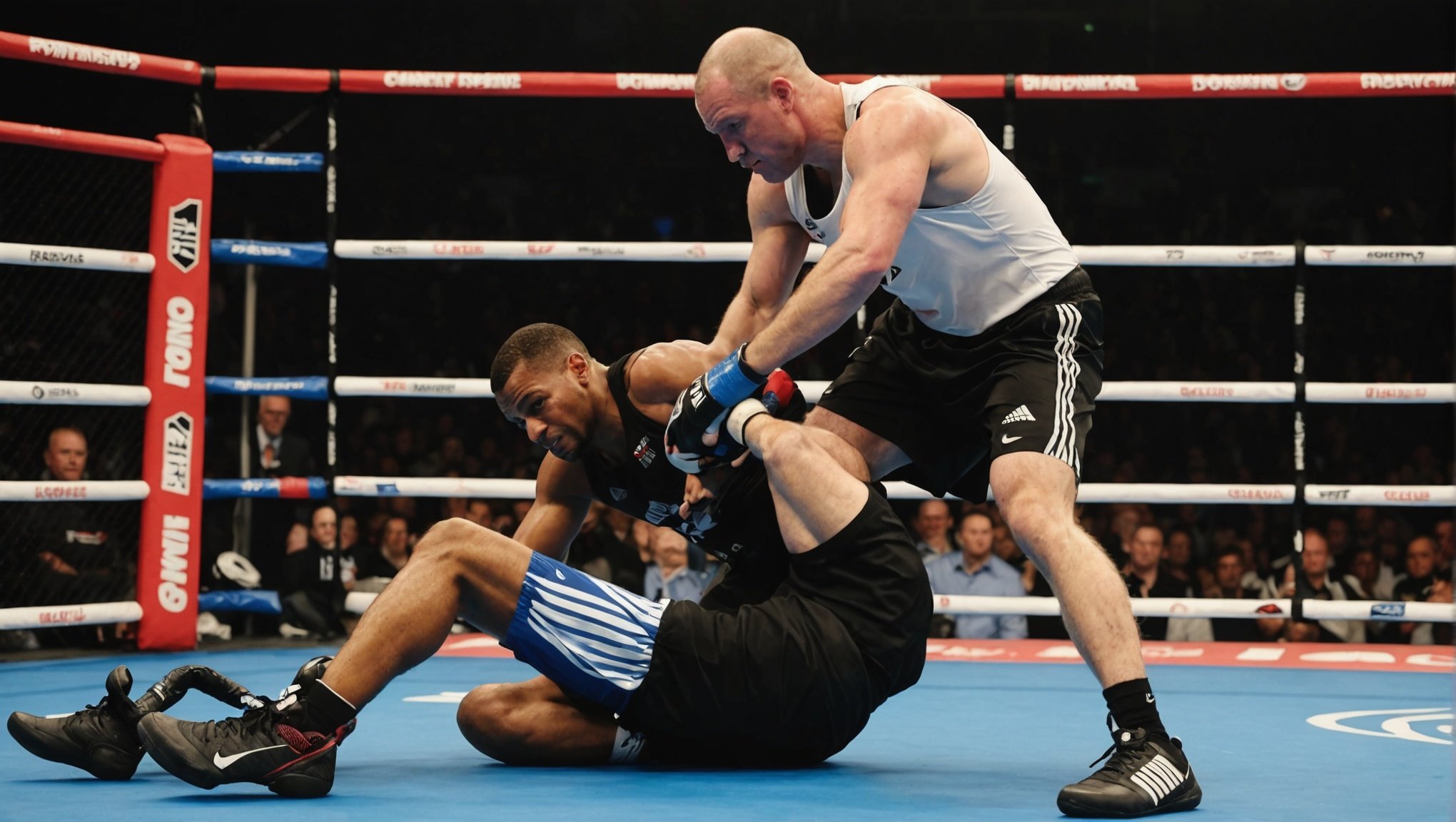Risk Assessments and Safety Protocols
Ensuring athlete safety in combat sports begins with conducting regular and comprehensive risk assessments. This proactive approach identifies potential hazards and evaluates the likelihood and impact of injuries. Conducting frequent assessments helps sports organizations manage risks effectively, thereby safeguarding athletes.
Developing a comprehensive safety protocol manual is another fundamental step in promoting athlete safety. This document should detail step-by-step procedures to handle various emergencies and minimize accident possibilities. A well-crafted manual serves as a guide for coaches, medical staff, and athletes, ensuring everyone is prepared and aware of their roles in maintaining safety standards.
Topic to read : Unlocking Precision: The Impact of Biomechanical Analysis on Fencing Techniques for UK Athletes
Moreover, engaging all stakeholders in the risk assessment process is crucial. Athletes, coaches, medical staff, and even administrative personnel each have a unique perspective and valuable insights. Involving all parties ensures a more thorough evaluation of potential risks and enhances the effectiveness of safety protocols. Their collaboration fosters a sense of shared responsibility and commitment to the safety objectives.
In conclusion, implementing risk assessments and dedicating resources to develop robust safety protocols are key steps in prioritizing athlete safety in combat sports. Regular reviews and updates, incorporating input from all stakeholders, can create a safer sporting environment for everyone involved.
Topic to read : Boosting Recovery: The Role of Massage Therapy for UK Combat Sports Athletes
Safety Equipment and Standards
In the world of combat sports, safety equipment is not just an accessory; it’s a necessity. Each sport, whether boxing, mixed martial arts, or karate, requires specific protective gear to minimise injury risks for participants. For instance, in boxing, gloves and headgear are crucial pieces of kit, while karate practitioners rely heavily on mouthguards and body protectors.
Compliance standards play a pivotal role in defining what equipment is necessary and how it should function. Organisations like the International Boxing Association (IBA) and various national sports authorities set these guidelines to ensure athletes’ safety. It’s essential for clubs and individuals to stay informed about these evolving standards, guaranteeing that their gear meets current regulations. Ignoring compliance can result in penalties or dangerous practises.
Additionally, regular inspection and maintenance of safety gear are non-negotiable. Over time, wear and tear can diminish the effectiveness of equipment, such as padding in gloves or the impact resistance of helmets. Frequent checks and timely replacements are advised to keep protective gear in optimal condition. This proactive approach not only upholds compliance standards but also optimises athlete protection, enabling them to focus on their performance with peace of mind.
First Aid Training for Staff and Coaches
In the realm of combat sports, ensuring that staff and coaches possess adequate first aid training is not just beneficial—it’s essential. When athletes are pushed to their limits, injuries can occur. Thus, a robust program in emergency response equips personnel to handle these situations promptly and effectively.
Necessity of First Aid Training
First aid training is vital for coaches and staff to swiftly manage injuries, mitigate risks, and maintain a safe sporting environment. Equip your team to react to bleeding, fractures, or concussions, reducing potential harm through immediate care.
Tailored Training Programs
Designing a training program specific to combat sports involves focusing on scenarios likely to occur in this high-contact field. This includes understanding the quick emergency response to common injuries such as dislocations or concussions. Customizing the content to reflect real-world situations ensures relevance and practical application.
Evaluating Knowledge and Readiness
It’s crucial to evaluate the knowledge and readiness of the staff through drills and assessments. These evaluations can help identify areas needing improvement and ensure that all members are competent in handling emergencies. Regular drills enhance the confidence of the team, building their ability to respond effectively under pressure.
Injury Prevention Strategies
When discussing injury prevention for athletes, attention to detail and structured strategies are crucial. Implementing proper warm-up and cool-down routines is a fundamental aspect of injury prevention. Warm-ups prepare the body by increasing blood flow, thereby oxygenating muscles and reducing the risk of strains. A good cool-down, conversely, helps muscles recover and prevents stiffness.
Monitoring training intensity is another key strategy. Training loads should be carefully managed to avoid overuse injuries. By progressively increasing training intensity, athletes can build resilience without crossing the threshold that may lead to injury. Effective risk management involves understanding each athlete’s limits and ensuring their training volume matches their capacity.
Additionally, nutrition and hydration play a vital role in injury prevention. Proper nutrition fuels the body, while adequate hydration prevents muscle cramps and joint pain. Proteins and carbohydrates must be consumed in appropriate portions to aid recovery and energy replenishment. Athletes should maintain balanced fluids to offset any dehydration risk during intense sessions.
To ensure comprehensive risk management in athlete training, these strategies must be embedded in a routine grounded in awareness and adaptation. This holistic approach to injury prevention uplifts athletes, reducing potential injury while fostering a healthier training environment.
Regulatory Compliance and Legal Responsibilities
In the United Kingdom, engaging with combat sports requires a firm understanding of regulatory compliance to ensure the safety and well-being of athletes. The regulations stipulate the measures clubs must implement to safeguard participants. Key to this is the adherence to health and safety standards, which are outlined by the British governing bodies for combat sports. These standards specify equipment safety, venue suitability, and comprehensive risk assessments which club owners must conduct.
Legal responsibilities fall heavily on club owners, who must ensure that training facilities meet all necessary regulations. This includes maintaining updated licensure and certifications for trainers and ensuring that emergency protocols are comprehensively planned and communicated. Failing to comply with these legal responsibilities can result in severe ramifications, including fines and revoking of operational licenses.
Creating an athlete rights charter is an invaluable resource for clubs. This document ensures that athlete rights are clearly articulated and protected. The charter should encompass athletes’ rights to fair treatment, safety, and transparency. By prioritising the creation of this charter, club owners can reinforce their commitment to athlete health and legal integrity. Understanding and upholding these responsibilities not only ensures compliance but also nurtures a trust-filled environment where athletes can thrive.
Wellness Programs for Athletes
Understanding the holistic needs of combat sports athletes is essential for designing effective wellness programs. Both their physical and mental health play crucial roles in their overall performance and long-term success. Combat sports are demanding, and sustaining peak performance requires balancing physical conditioning with mental fortitude. Athlete wellness extends beyond mere physical fitness, encompassing psychological support which is pivotal in facing the pressures of competition.
Developing wellness programs that focus on mental health in tandem with physical training is key. These programs should include strategies for stress management, resilience building, and emotional support. Psychological support can manifest in various forms, such as one-on-one therapy, group sessions, or workshops focusing on mental strength.
Proactive monitoring of athlete welfare is another critical aspect. Regular check-ins and assessments enable early detection and addressing of potential mental health issues. This not only helps in maintaining the athlete’s well-being but also enhances their focus and performance in competitions. Athletes benefit from knowing there’s a strong support system in place, allowing them to concentrate on honing their skills.
Incorporating mental health and support programs into the wellness framework ensures athletes possess the necessary tools to navigate their demanding careers effectively, underscoring the importance of a comprehensive approach to wellness in combat sports.













